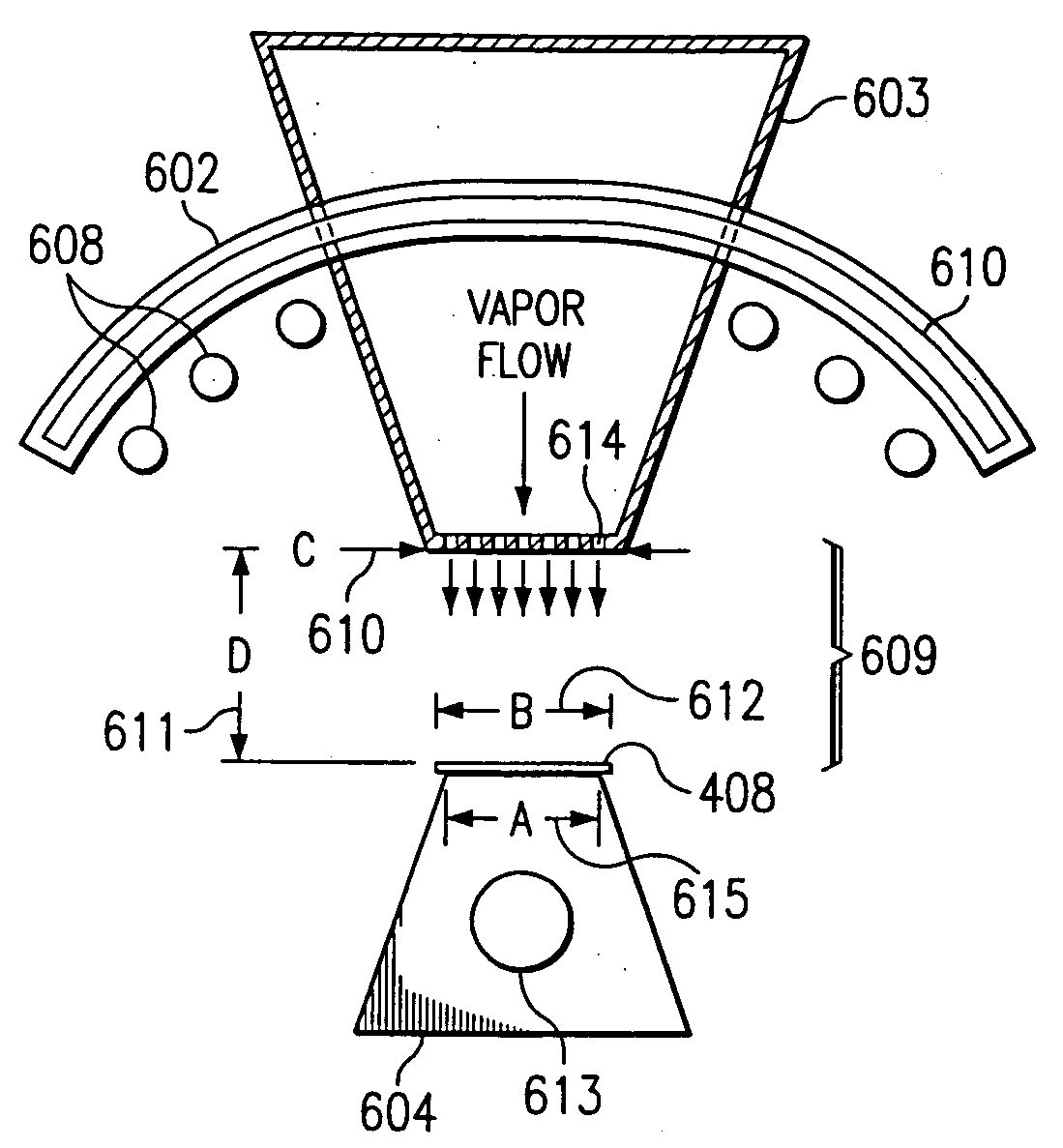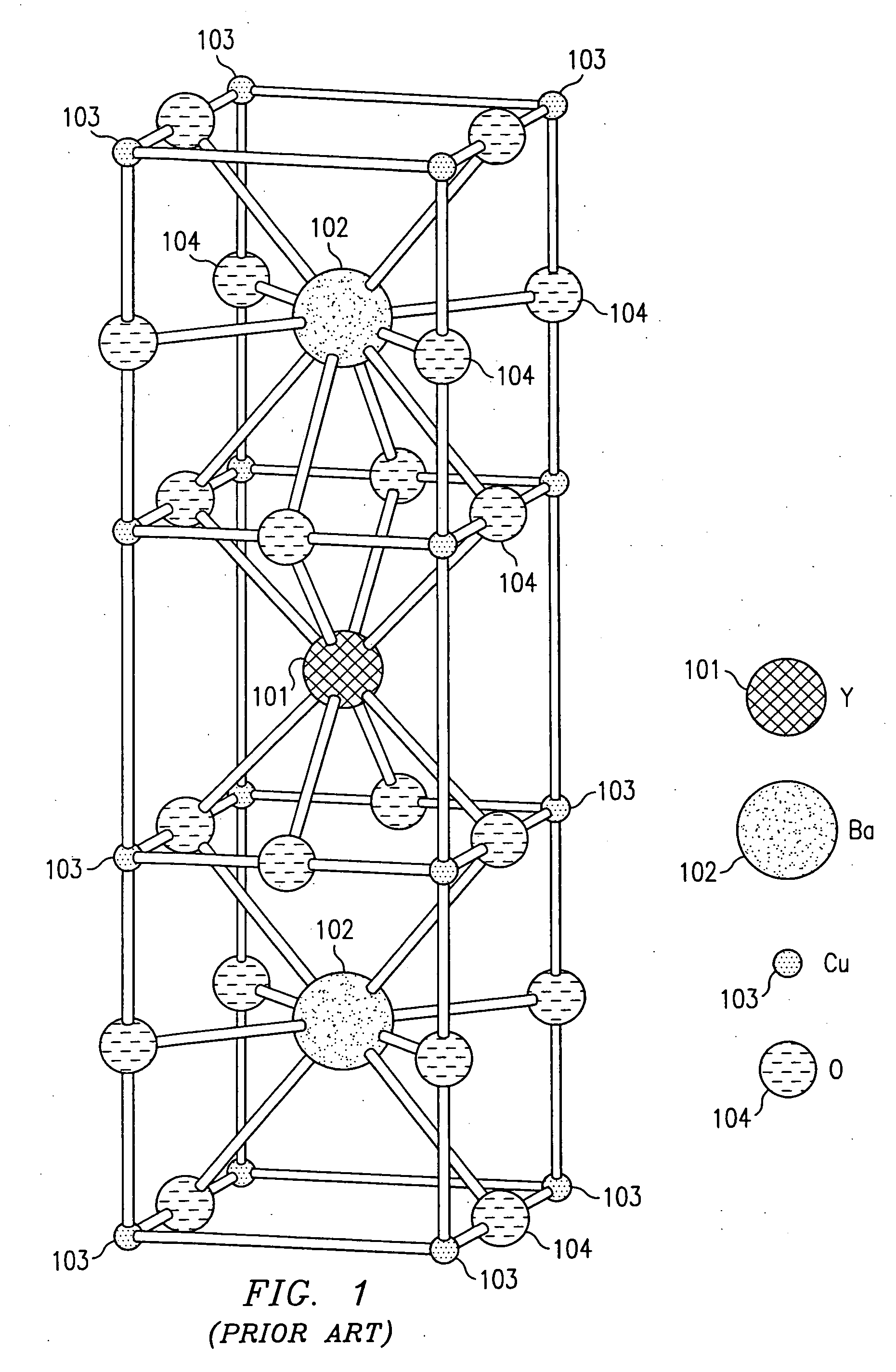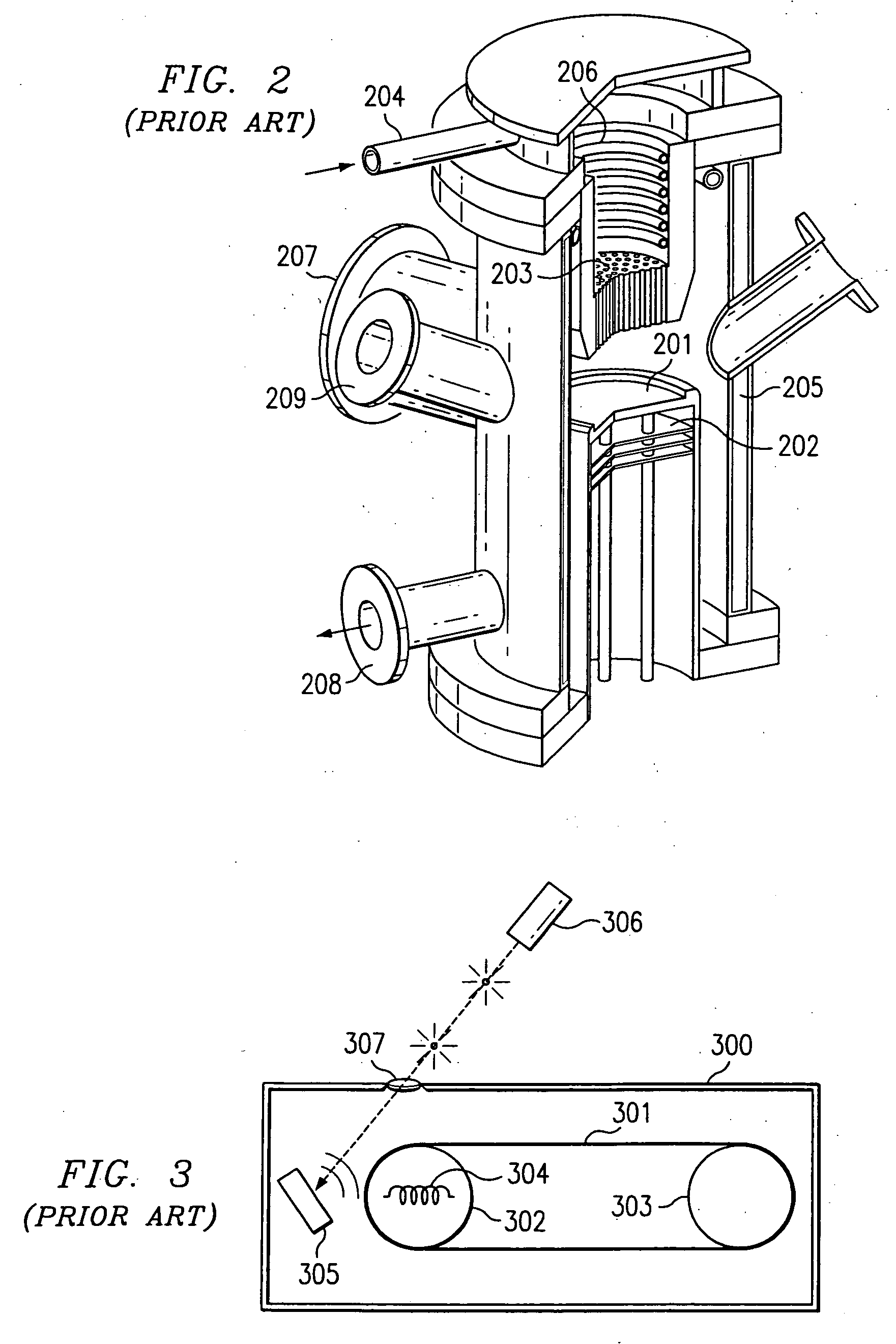Superconductor material on a tape substrate
a technology of superconductor material and tape substrate, which is applied in the direction of permanent superconductor devices, oxide conductors, non-metal conductors, etc., can solve the problems of power dissipation, loss, and undesirable electrical resistance in some applications, and achieve the effect of reducing the cost of production, and improving the quality of production
- Summary
- Abstract
- Description
- Claims
- Application Information
AI Technical Summary
Benefits of technology
Problems solved by technology
Method used
Image
Examples
Embodiment Construction
[0024]FIG. 4 is a schematic diagram of an embodiment of a system 400 that uses the invention to produce a continuous tape of high temperature super-conducting (HTS) material. The system 400 includes several stages that operate together to deposit SC material onto a metallic substrate, such that the HTS material is atomically ordered with large, well-oriented grains and principally low angle grain boundaries. The atomic ordering allows for high current densities, e.g. JC greater than or equal to 100,000 amps per cm2.
[0025]The metallic substrate is preferably a metal foil tape 408 that is from 10 / 1000 to 1 / 1000 of an inch thick. The tape maybe as wide as desired. For example, the tape may be wide so that the resulting HTS tape can carry a large amount of current, or the tape may be wide so that the resulting HTS tape can be cut into narrower strips.
[0026]The tape 408 is preferably composed of nickel and / or a nickel alloy, and has a predetermined atomic ordering which will promote grow...
PUM
| Property | Measurement | Unit |
|---|---|---|
| Length | aaaaa | aaaaa |
| Thickness | aaaaa | aaaaa |
| Temperature | aaaaa | aaaaa |
Abstract
Description
Claims
Application Information
 Login to View More
Login to View More - R&D
- Intellectual Property
- Life Sciences
- Materials
- Tech Scout
- Unparalleled Data Quality
- Higher Quality Content
- 60% Fewer Hallucinations
Browse by: Latest US Patents, China's latest patents, Technical Efficacy Thesaurus, Application Domain, Technology Topic, Popular Technical Reports.
© 2025 PatSnap. All rights reserved.Legal|Privacy policy|Modern Slavery Act Transparency Statement|Sitemap|About US| Contact US: help@patsnap.com



